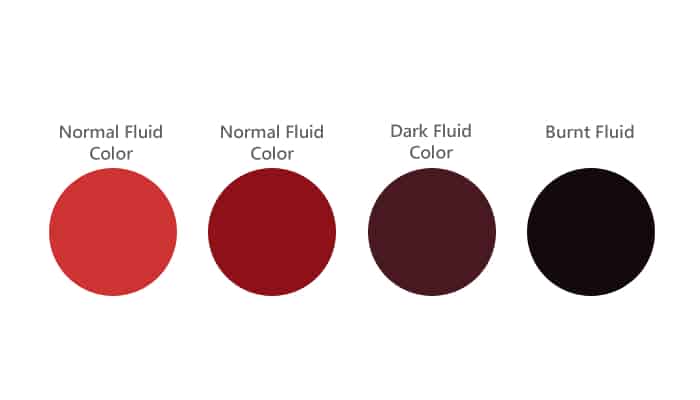Understanding Manual Transmission Fluid for Your Acura
When it comes to maintaining your 2006 Acura RSX Type S, one of the critical components to keep in check is the manual transmission fluid. This fluid plays a vital role in ensuring smooth gear shifts, protecting the transmission components, and ultimately prolonging the life of your vehicle. Let’s break down what you need to know about the specifications and recommendations for your manual transmission fluid.
Manufacturer’s Recommendations
| Popular posts |
|---|
| What to do to prolong the life of your manual gearbox |
| Automatic transmission: what it is, how it works |
The manufacturer of your Acura RSX Type S has specific recommendations regarding the type of manual transmission fluid you should use. According to Honda’s guidelines, the recommended fluid for the manual transmission is Honda Manual Transmission Fluid or an equivalent that meets the same specifications.
Specifications
Here are the key specifications you should look for in your manual transmission fluid:
- Viscosity: The fluid should have a viscosity rating of 10W-30 or 10W-40, which is crucial for maintaining proper lubrication at various temperatures.
- API Rating: Look for fluids that meet the API GL-4 or GL-5 ratings. These ratings indicate that the fluid has the necessary properties to protect gears and bearings.
- Compatibility: Ensure that the fluid is compatible with the materials used in your transmission, particularly the seals and gaskets, to prevent leaks and degradation.
Why Stick to Manufacturer Recommendations?
Using the manufacturer’s recommended fluid is not just a suggestion; it’s a necessity. Here’s why:
- Performance: The right fluid ensures optimal performance of the transmission. It helps in smooth shifting and reduces wear on the gears.
- Protection: The specified fluid provides adequate protection against heat and friction, which can lead to premature wear and failure of the transmission components.
- Warranty: Using non-recommended fluids can void your warranty. Stick to what the manufacturer suggests to avoid any issues down the road.
Common Alternatives
If you’re in a pinch and can’t find the Honda Manual Transmission Fluid, there are a few alternatives that may meet the specifications. However, always double-check the labels and ensure they meet the required viscosity and API ratings. Some commonly used alternatives include:
- Red Line MT-90
- Royal Purple Synchromax
- Amsoil Manual Transmission and Transaxle Gear Lube
Remember, while alternatives can work, they may not always provide the same level of performance as the manufacturer’s recommended fluid.
In summary, using the right manual transmission fluid is crucial for the longevity and performance of your 2006 Acura RSX Type S. Stick to the manufacturer’s recommendations, and you’ll be on the right track to keeping your car running smoothly.
Recommended Oil Brands for Your Acura RSX Type S
When it comes to maintaining the manual transmission of your 2006 Acura RSX Type S, choosing the right oil brand can make a significant difference in performance and longevity. Based on feedback from various automotive forums and owner experiences, several brands have emerged as popular choices among RSX enthusiasts. Here’s a look at some of the top recommended oil brands for your manual transmission fluid.
Honda Manual Transmission Fluid
It’s no surprise that the first recommendation comes straight from the manufacturer. Honda Manual Transmission Fluid is specifically designed for the needs of your RSX. Owners frequently report that using this fluid results in smooth shifting and optimal performance.
- Pros: Tailored for Honda vehicles, excellent protection against wear.
- Cons: Can be more expensive than other brands.
Red Line MT-90
Red Line MT-90 is a synthetic gear oil that has gained a strong following among RSX owners. Many users rave about its ability to reduce shifting effort and improve overall transmission feel.
- Pros: Excellent temperature stability, reduces friction, and enhances shifting performance.
- Cons: Some users report a slightly higher price point compared to conventional oils.
Royal Purple Synchromax
Royal Purple Synchromax is another popular choice among Acura enthusiasts. This synthetic fluid is designed to improve shifting performance and reduce wear on synchronizers.
- Pros: Known for its high performance and ability to improve shift quality.
- Cons: Availability can be an issue in some areas, and some users find it slightly pricier.
Amsoil Manual Transmission and Transaxle Gear Lube
Amsoil is a well-respected name in the automotive lubricant industry, and their Manual Transmission and Transaxle Gear Lube is no exception. Many RSX owners have reported positive experiences with this fluid, citing its excellent protection and performance.
- Pros: High-quality synthetic fluid that offers great protection and longevity.
- Cons: Some users may find it harder to source compared to more common brands.
Motul Gear 300
Motul Gear 300 is a high-performance synthetic gear oil that has garnered attention in the automotive community. Many RSX owners have shared their positive experiences with this fluid, particularly in terms of shift smoothness and overall performance.
- Pros: Excellent thermal stability and protection, suitable for high-performance applications.
- Cons: Higher price point may deter some budget-conscious owners.
Valvoline Synchromesh
Valvoline Synchromesh is another option that has received favorable reviews from RSX owners. This fluid is designed to provide smooth shifting and protect against wear.
- Pros: Affordable and widely available, good performance for daily driving.
- Cons: Some users report that it may not perform as well under extreme conditions.
Owner Feedback and Experiences
A common theme across various forums is the importance of personal preference and driving style when selecting a manual transmission fluid. Many owners emphasize that while one brand may work wonders for one driver, it may not necessarily be the best choice for another. Here are some insights gathered from owner feedback:
- Many enthusiasts recommend sticking with Honda’s own fluid for daily driving, especially if the vehicle is still under warranty.
- For those who participate in motorsports or spirited driving, synthetic options like Red Line or Motul are often preferred for their performance benefits.
- Several users have noted that switching brands can sometimes lead to noticeable differences in shifting feel, so it’s worth experimenting to find what works best for you.
In summary, the choice of manual transmission fluid for your 2006 Acura RSX Type S can significantly impact your driving experience. Whether you opt for Honda’s own fluid or one of the popular synthetic alternatives, the key is to choose a product that aligns with your driving habits and maintenance philosophy.
Change Interval for Manual Transmission Fluid
Maintaining your 2006 Acura RSX Type S involves more than just regular oil changes; the manual transmission fluid also requires attention. Understanding the change interval for your transmission fluid is crucial for ensuring optimal performance and longevity of your vehicle.
Recommended Change Interval
For the Acura RSX Type S, the general recommendation for changing the manual transmission fluid is every 30,000 to 60,000 miles (approximately 48,000 to 96,000 kilometers). However, this can vary based on driving conditions and habits.
Factors Influencing Change Interval
Several factors can affect how often you should change your manual transmission fluid:
- Driving Conditions: If you frequently drive in stop-and-go traffic, tow heavy loads, or engage in spirited driving, you may need to change the fluid more frequently.
- Fluid Quality: The type of fluid used can also impact how long it lasts. Synthetic fluids tend to have a longer lifespan than conventional oils.
- Vehicle Age: As your vehicle ages, the transmission components may wear down, leading to a need for more frequent fluid changes.
Partial Transmission Oil Changes
In many cases, performing a full transmission oil change can be a cumbersome task, often requiring the removal of the transmission from the vehicle. This can be time-consuming and costly. As a result, many owners opt for partial transmission oil changes, which can still provide significant benefits.
What is a Partial Transmission Oil Change?
A partial transmission oil change involves draining a portion of the old fluid and replacing it with new fluid, rather than completely draining the entire system. This method can help maintain fluid quality without the need for extensive labor.
Benefits of Partial Changes
There are several advantages to opting for partial transmission oil changes:
- Cost-Effective: Partial changes are generally less expensive since they require less labor and time.
- Improved Fluid Quality: Regularly replacing a portion of the fluid can help maintain better overall fluid quality, reducing the buildup of contaminants.
- Less Downtime: Since partial changes are quicker, you can get back on the road sooner.
Statistical Data and Authoritative Sources
According to a study by the Automotive Research Association, regular maintenance, including fluid changes, can extend the life of a vehicle’s transmission by up to 50%. This statistic underscores the importance of keeping your transmission fluid fresh, whether through full or partial changes.
Additionally, the National Institute for Automotive Service Excellence (ASE) recommends that vehicle owners consider their driving habits and conditions when determining fluid change intervals. They emphasize that even partial changes can significantly improve the performance and longevity of the transmission system.
In summary, while the recommended change interval for your manual transmission fluid is generally every 30,000 to 60,000 miles, understanding the benefits of partial changes can help you maintain your vehicle more effectively without the need for extensive service.
What Color Should Transmission Fluid Be?


